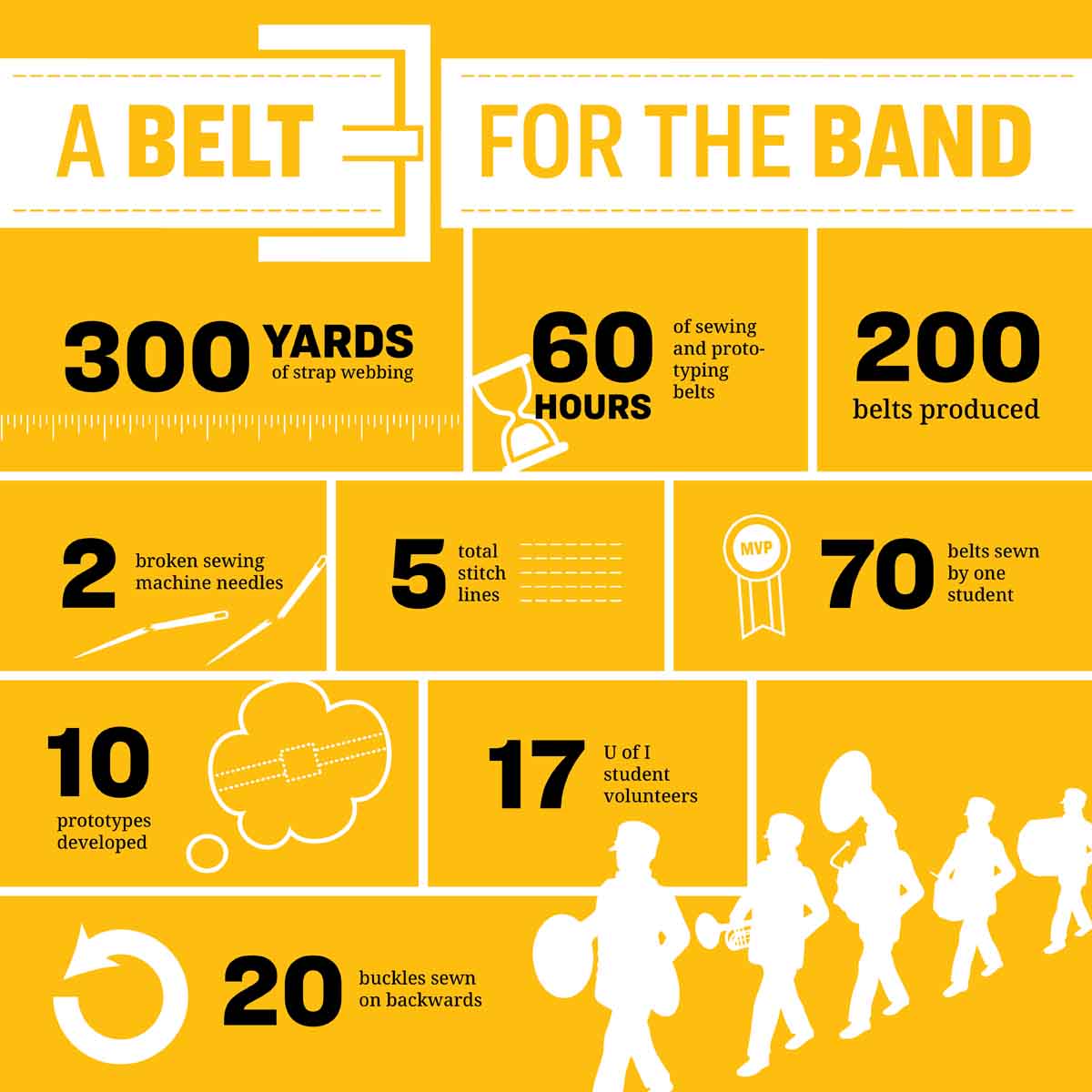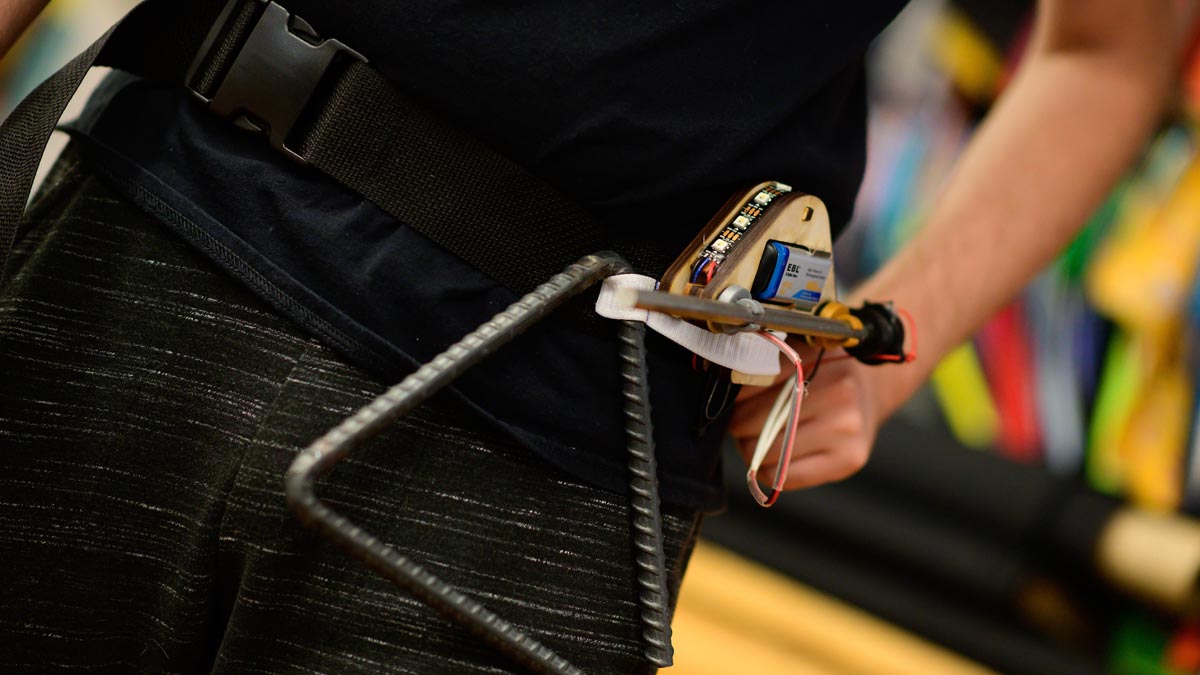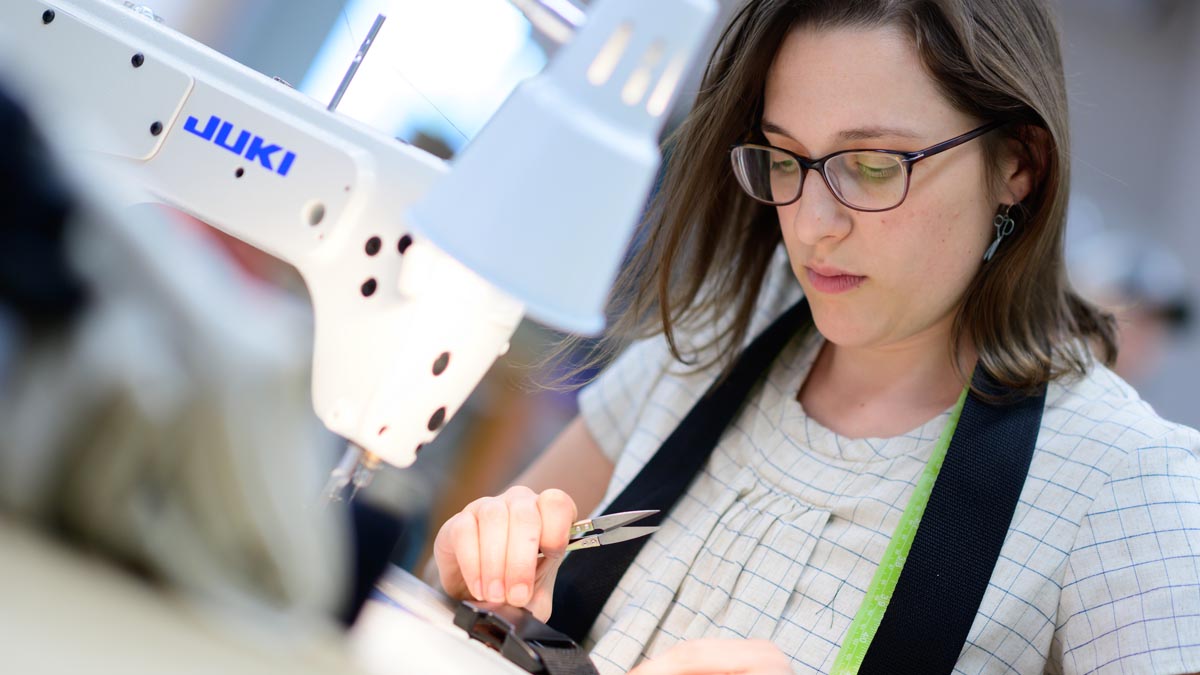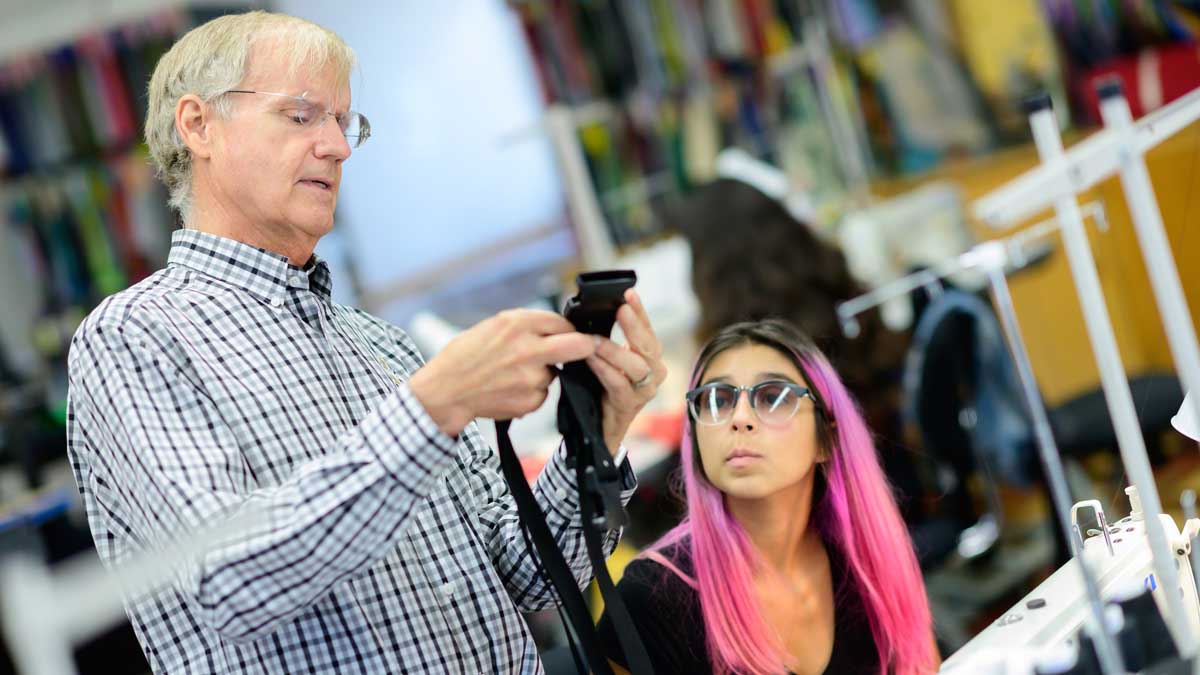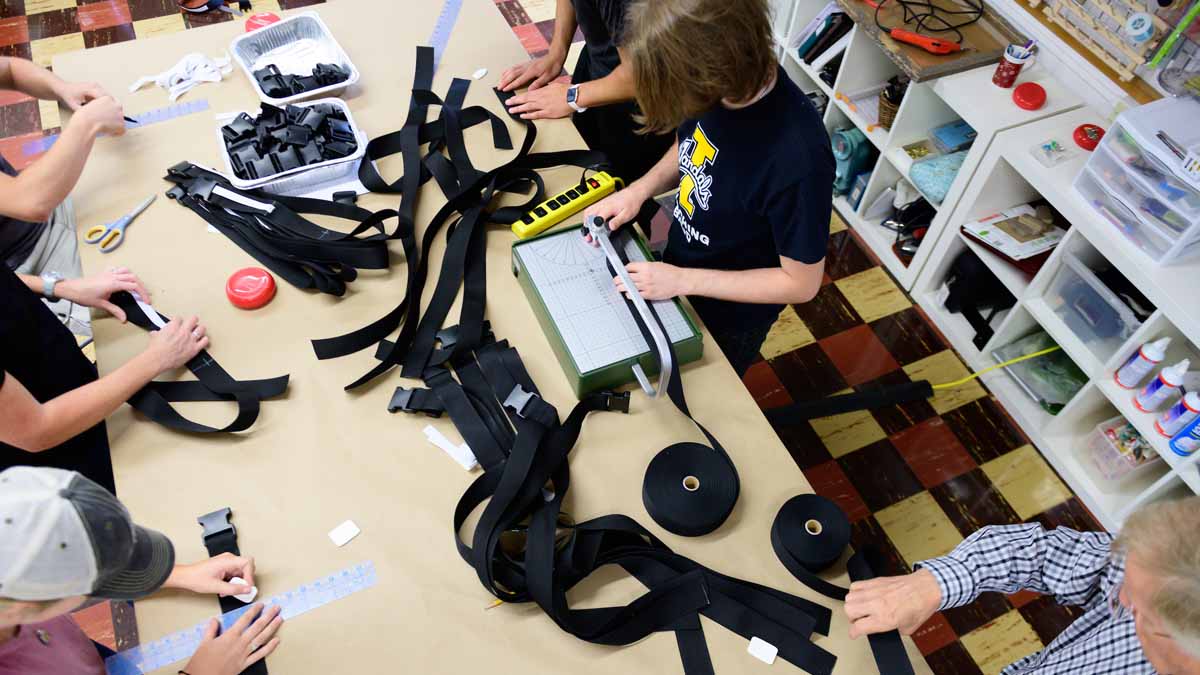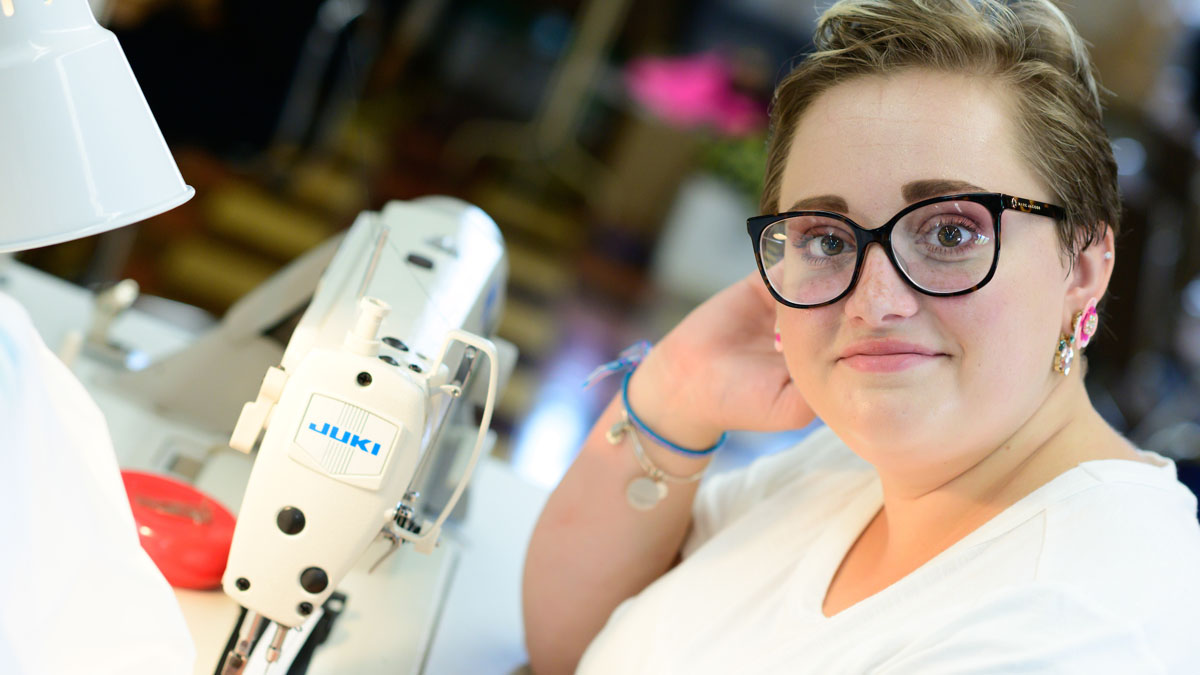Belts for the Band
The University of Idaho Marching Band has a long history of innovation. For the past several years, the band has collaborated with faculty and staff in the U of I College of Engineering on such projects as a robotic grand piano, water drums and LED sunglasses.
In 2019, the collaboration added a new partner — faculty and students from the Margaret Ritchie School of Family and Consumer Sciences (FCS) in the U of I College of Agricultural and Life Sciences.
From Concept to Prototype
Edwin Odom, professor in the Department of Mechanical Engineering, worked with faculty in the FCS apparel, textiles and design (ATD) program before and when this year’s idea for the marching band called for a textiles component he knew just who to turn to.
Four U of I mechanical engineering seniors developed a prototype for a musical triangle hooked to an LED component that lights up when played. The original idea was for 10 band members to play the devices during the halftime performance of the U of I Homecoming football game.
Odom reached out to Chelsey Byrd Lewallen, an FCS instructor who specializes in apparel construction, and she jumped at the chance to get involved.
“I’m really interested in collaboration. Everybody wears clothing and uses textiles on a daily basis. I’m excited for any opportunity to show our students the diversity of fields where they can use their skills,” she said.
At first, the team worked on a prototype for a triangular pouch with a zipper to hold the triangles. After presenting the idea to marching band director, Spencer Martin, they decided something more practical was needed to minimize time spent getting the triangle out and ready to play during a performance. The quota also increased, from 10 members playing the triangle to 150.
“The original purpose of the bag was to house the triangles, which then evolved into something that the band members could more easily incorporate into their performance,” Lewallen said.
Lewallen tried 10 prototypes, beginning with the triangle pouch, before settling on a strap webbing belt with a buckle. Elastic pieces were sewn to the webbing to house the triangle and a second section to house the LED component attached to the triangle — a sort of triangle holster.
“For the marching band, speed was of the essence,” Lewallen said. “We needed to eliminate inefficiencies so the band members could quickly set down their instruments and pull out the triangle.”
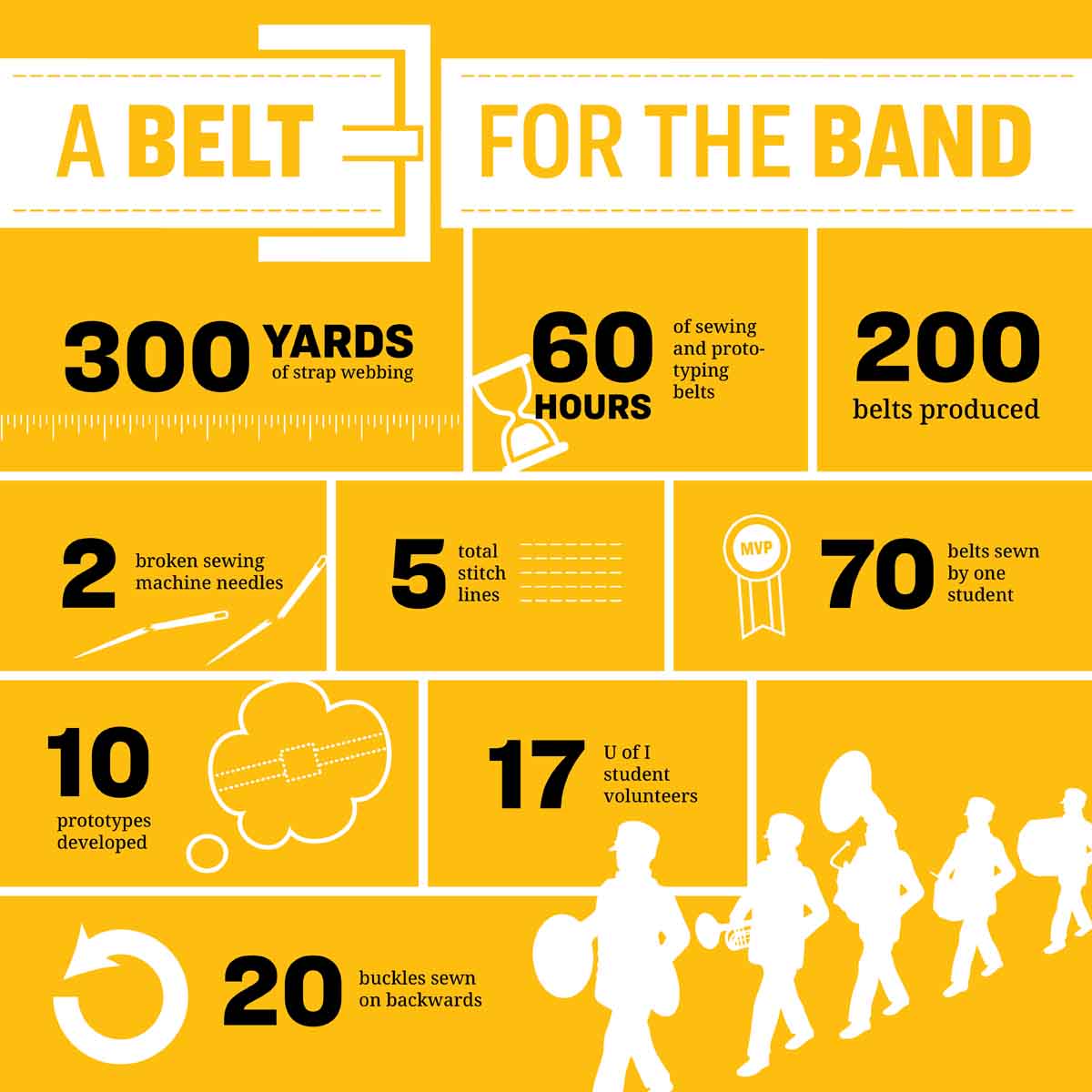
Belts for the Band
University of Idaho students gain hands-on experience in textile assembly line production as part of a collaboration with the U of I Marching Band.
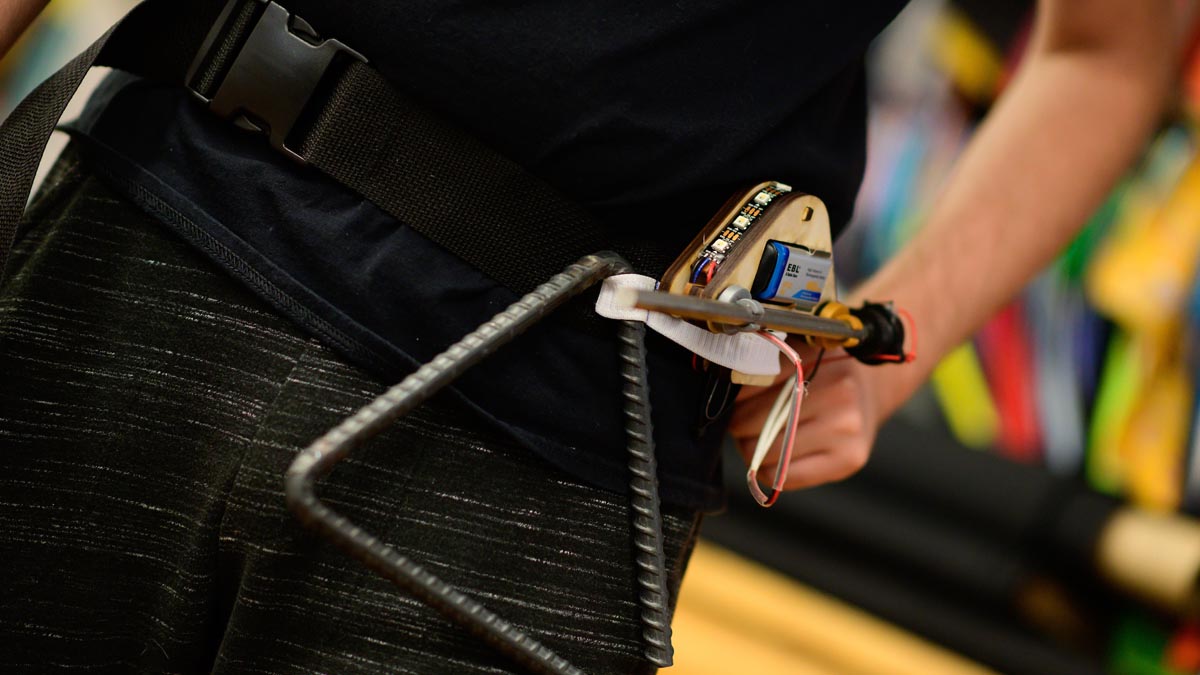
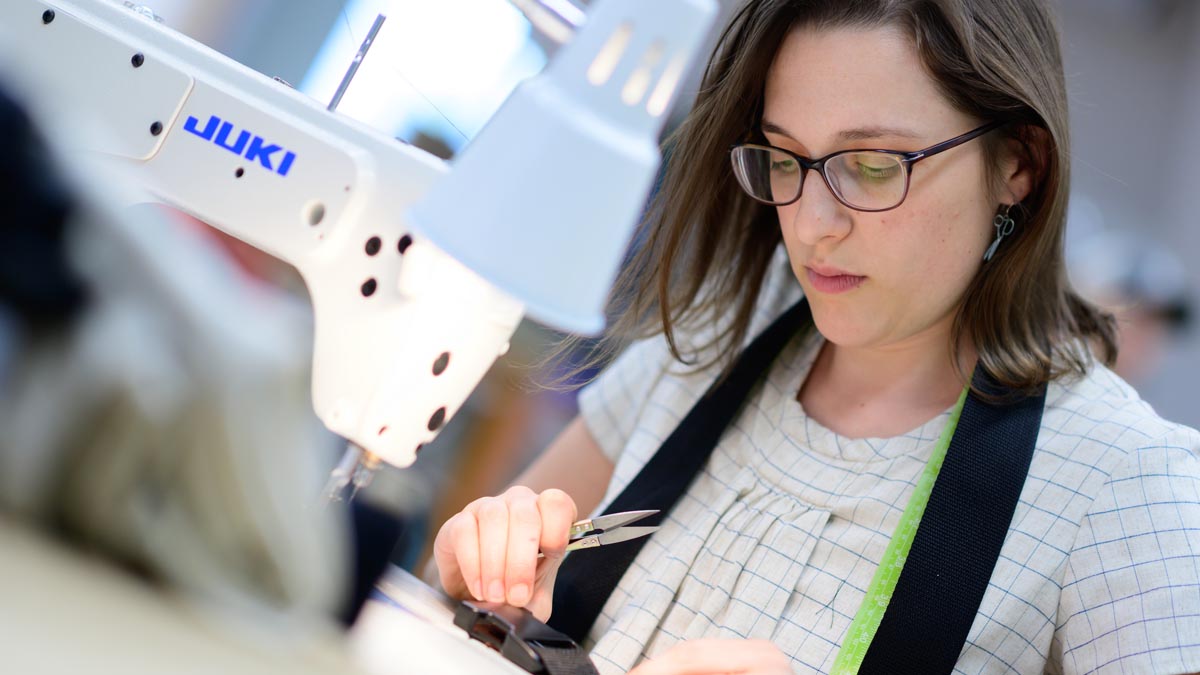
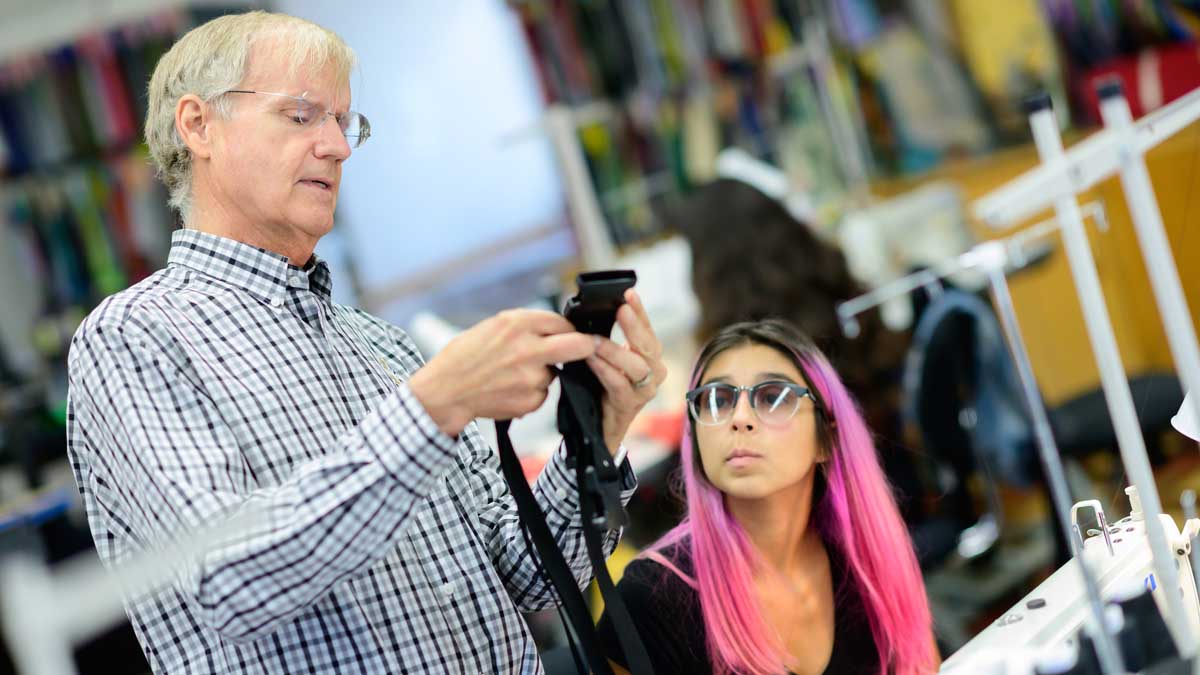
From Prototype to Production
To mass produce the final product, Lewallen contacted ATD students who had recently completed her apparel construction and the assembly process course and asked for volunteers.
“In class we learn about the process of sewing something but also taking someone’s design and figuring out how to efficiently assemble it,” Lewallen said. “Then we have an assembly day where students have one or two jobs that they get really good at because you’re doing it over and over again.”
Lewallen mapped out an assembly line and the ATD students, along with students from mechanical engineering and the marching band, produced the final product.
Maddy Machen, a junior ATD student from Idaho Falls, enjoyed the process so much she ended up completing 70 of the belts by herself.
“I learned that I loved the process of an assembly line project,” Machen said. “Not everything went according to plan — there were times that I messed up and had to fix what I messed up. Sometimes I had to take a step back and take a breather from the project when I was frustrated.”
Including prototypes, Lewallen, Odom and students constructed 200 belts.
“If you don’t have the knowledge of textiles, sewing and the order of operations, it would be really challenging to effectively get what you need,” Lewallen said. “I can’t think of any other way they could have housed it that doesn’t involve textiles so I’m glad that we could support them.”
For Lewallen, the opportunity to collaborate on a project like this was exciting, but the opportunity for her students to receive hands-on experience was the true benefit.
“It’s real world application and something they can put on their resume or CV,” she said. “The foundational knowledge that we give all of our students makes us special. It’s not just about the concept, it’s about the actual carrying out of an idea from start to finish — from concept to consumer.”
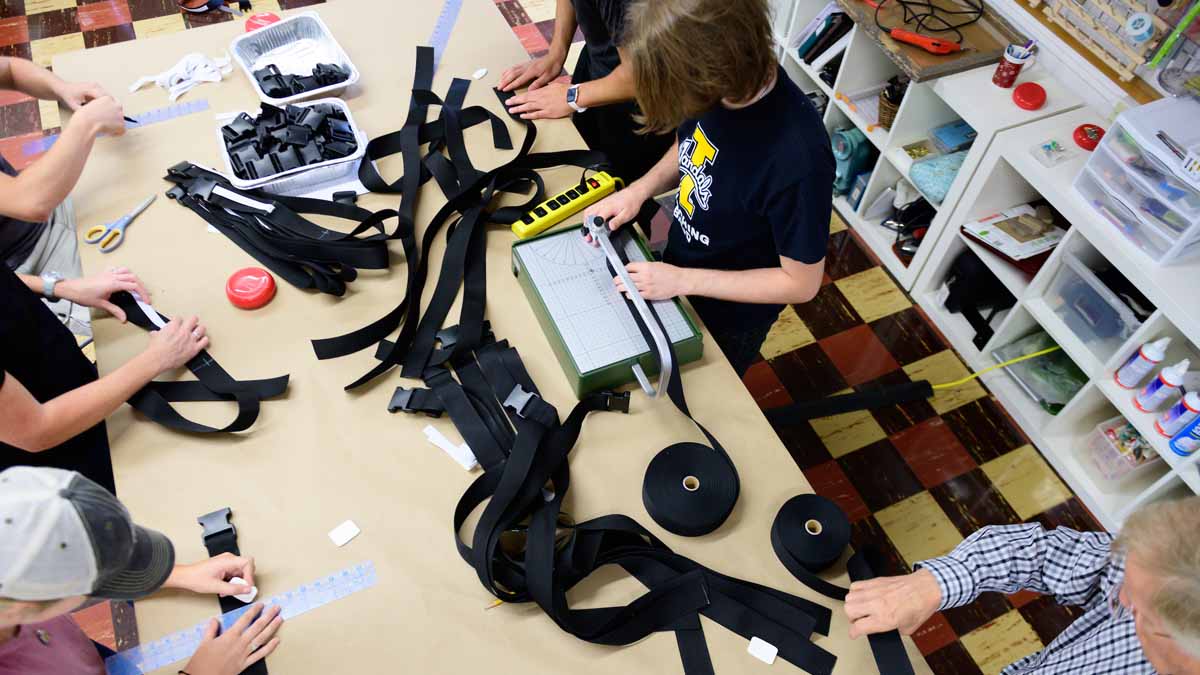
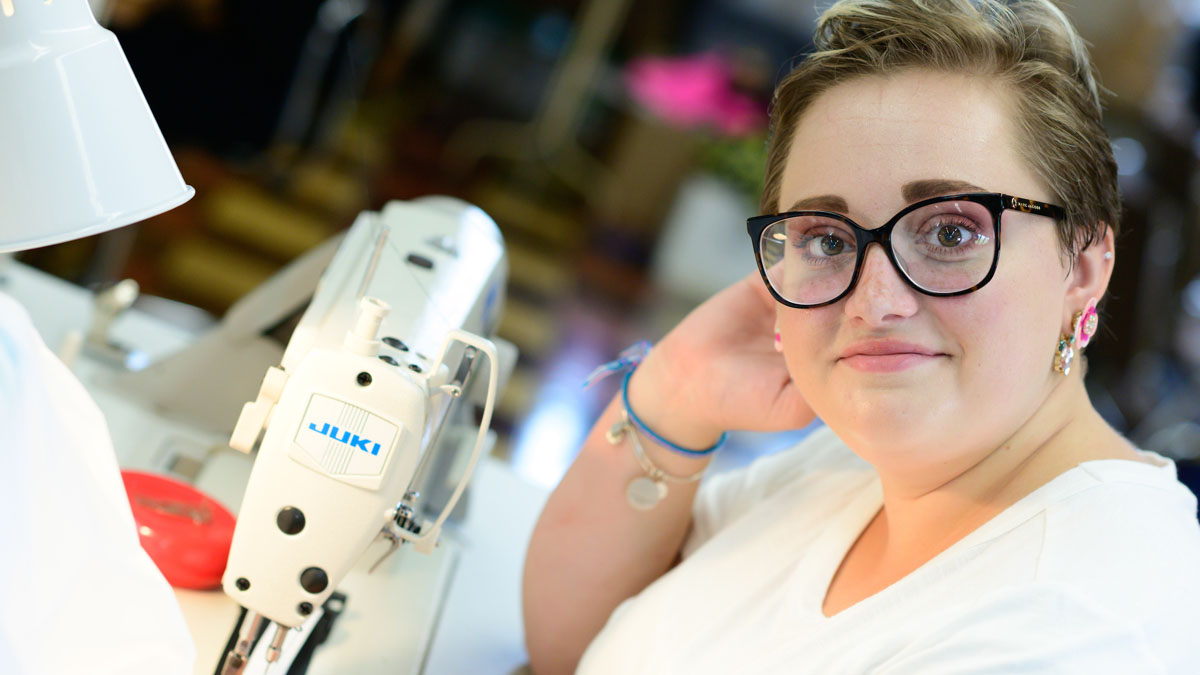
Article by Amy Calabretta, College of Agricultural and Life Sciences
Photos by Melissa Hartley, University Communications and Marketing
Video by Hans Guske, College of Agricultural and Life Sciences







